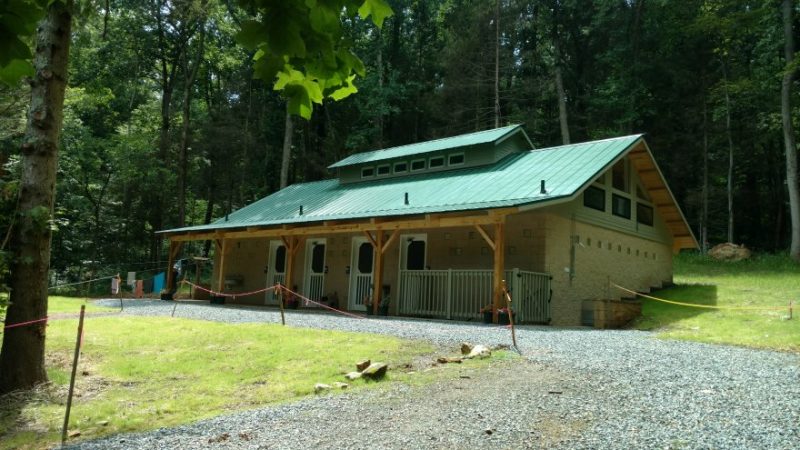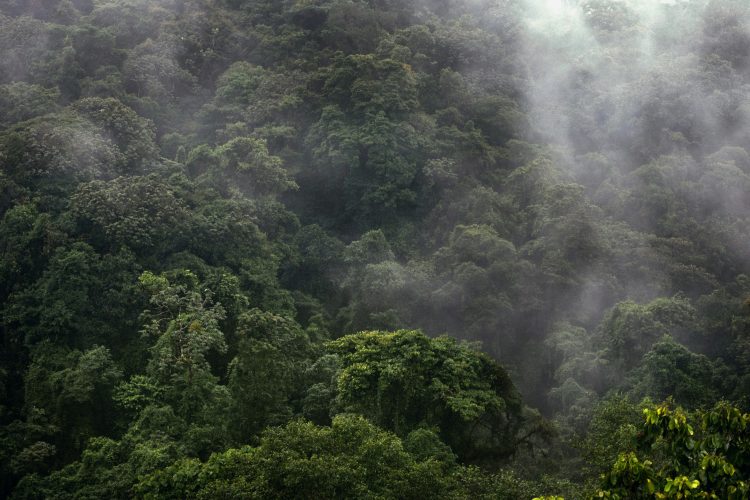The Gift That Keeps on Giving: Updates at Catoctin Quaker Camp

By Liz Hofmeister.
ON SEPTEMBER 30TH, former campers, counselors, and others long associated with Baltimore Yearly Meeting’s Catoctin Quaker Camp marked the 60th anniversary of the residential summer camp located some 50 miles west of Baltimore, MD. A highlight of the weekend celebration was the dedication of the camp’s new environmentally-friendly bath house. Built in the past year and used over the summer by more than 100 campers, the structure includes a number of green features, most prominently 10 composting toilets.
To help retire the “Friendly loans” given as part of the campaign to finance the new building, BYM staff thought they would have some fun. The Yearly Meeting offered “naming rights” for a toilet to anyone who made a $5,000 contribution. The word went out: “Are you looking for the perfect gift? Name a compositing toilet at Catoctin in honor or in memory of someone special.”
By the time of the dedication weekend , six of the ten toilets already had been named and will have tasteful, discrete plaques attached to them. During the anniversary celebration, there was a definite buzz about who else should be honored with this special memorial and who would contribute to make it possible.
In addition to being attractive, the new Catoctin bath house is a physical articulation of Baltimore Yearly Meeting’s commitment to sustainability. Years of research and design have made it possible to have a safe and efficient means of disposing of waste and the new building is putting this technology to good use.
If relying on the typical septic field to dispose of waste, a residential camp like ours would need to be able to supply and dispose of 40 to 50 gallons of water daily for each individual on site. At that rate, Catoctin would use and dispose of enough water to fill a school bus in fewer than three days!
Employing Clivus Multrim composters installed in the basement of the building, the same waste is being composted and made into safe, useful products. After 18 to 24 months, the composters will begin generating about two to three bushels of rich, odorless compost each year. There also will be about 500 gallons of nitrogen-rich, odorless liquid waste generated annually that will be applied to the camp landscape, enriching the surrounding flora.
By using this technology, the new Catoctin bath house is saving precious water and enriching the land. But more importantly Baltimore Yearly Meeting is introducing hundreds of visitors to the possibility of a new way of treating waste and a sustainable way of living with creation. Additionally, the building will significantly reduce the camp’s carbon footprint through the use of on-demand water heaters and LED lighting.
Other green features of the structure are rafter timbers sawn from trees removed from the site before construction and permeable crushed-gravel paths leading to the building.
Finally, the bath house offers staff of Baltimore Yearly Meeting’s summer camping program an attractive tangible example in how to walk gently on the earth that they can incorporate into the program for the hundreds of youth ages 9 to 14 years who will be attending the camp each summer in the coming years.
